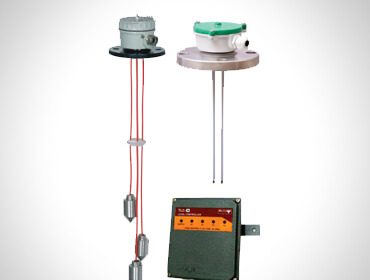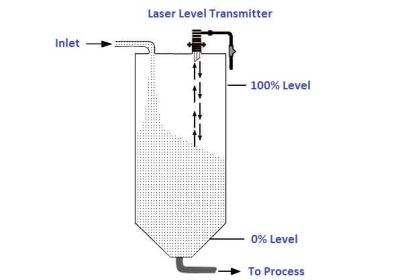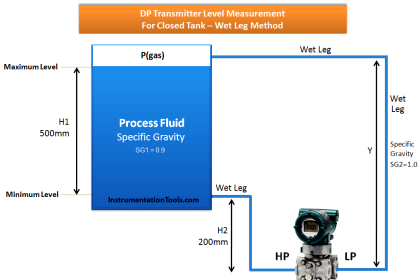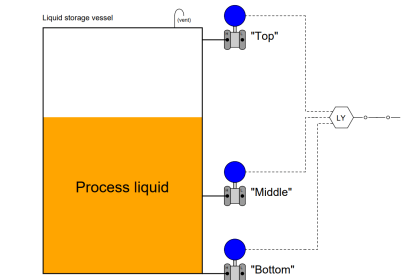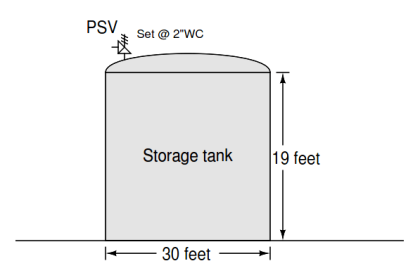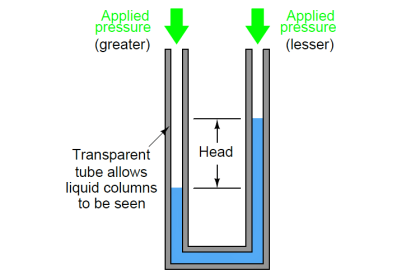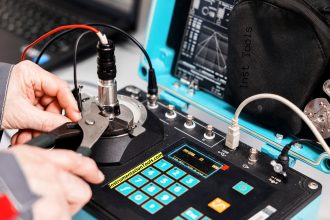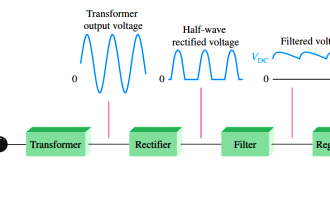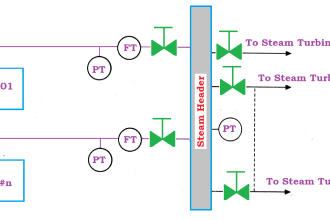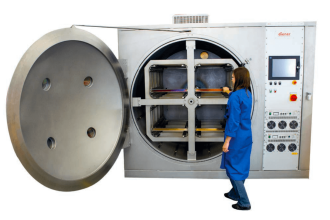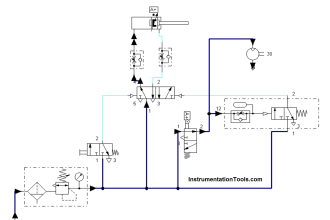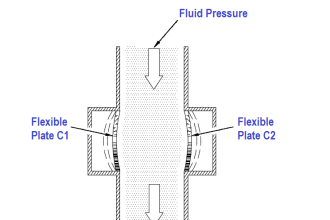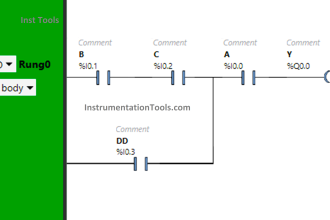Level Sensors Question 1
A person is floating in a swimming pool on an inflatable plastic cushion, holding a cup of drinking water.
If this person accidently dumps their drinking water into the pool, does the water level in the pool increase, decrease, or stay the same? Explain why.
Answer
The level in the pool remains the same, because the water displaced by the inflatable cushion is the amount of water equal in weight to the cushion plus the person plus the cup plus the water in the cup.
Spilling that cup-worth of water in the pool lightens the weight on the cushion which makes it displace less water, but this reduced displacement is precisely equal to the amount of water spilled into the pool.
Therefore, there will be no change whatsoever in the pool’s level.
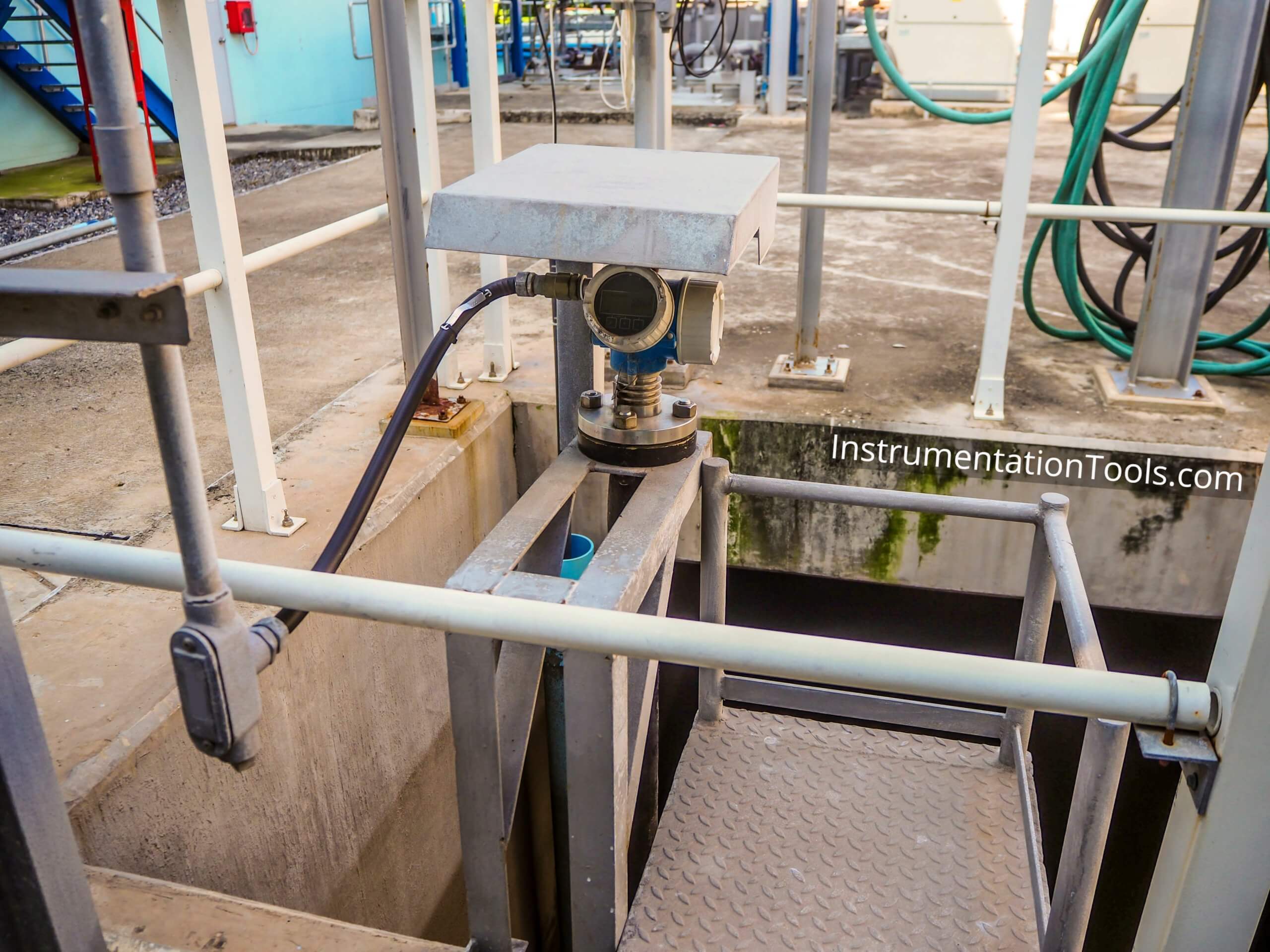
Level Sensors Question 2
If an ultrasonic level instrument is used to measure the level of nitric acid in a vessel, and the density of that acid increases over time due to increased concentration, how will the instrument respond?
Will it register an increased acid level, a decreased acid level, or will its indication remain the same as before? Explain your answer.
Answer
There will be no change in instrument indication resulting from a density change of the acid.
Only the vapor density above the liquid affects the speed of sound, which is the primary non-level variable affecting level measurement.
Level Sensors Question 3
A person is floating in a swimming pool on an inflatable plastic cushion, holding a bowling ball.
If this person accidently dumps the bowling ball into the pool, does the water level in the pool increase, decrease, or stay the same? Explain why.
Answer
The level in the pool will decrease, because the water displaced by the inflatable cushion is the amount of water equal in weight to the cushion plus the person plus the bowling ball.
Dropping the bowling ball into the pool lightens the weight on the cushion which makes it displace less water.
The bowling ball will only displace as much water as its volume, which is less water than what it weighs.
Therefore, the total amount of displaced water will decrease and the pool’s level will correspondingly decrease.
Level Sensors Question 4
If a tape-and-float level instrument is used to measure the level of alcohol in a vessel, and the density of that alcohol suddenly decreases, how will the instrument respond?
Will it register an increased alcohol level, a decreased alcohol level, or will its indication remain the same as before? Explain your answer.
Answer
There will be no change in instrument indication resulting from a density change of the alcohol, so long as the liquid remains denser than the float.
The buoyancy of the float will be slightly affected by the liquid’s density, but not much.
Share your answers & explanation with us through the below comments section.
Read Next:
- Liquid Level Sensors Symbols
- Level Gauge Interface Problem
- Tank Design and Accuracy
- Sump Tank Level Transmitter
- Guided Wave Radar Level Sensor
Credits: Tony R. Kuphaldt
